What is user generated content? The answer is simple: the old word-of-mouth marketing strategy now has a new name: user-generated content (UGC). In a world where brands would do anything to sell, consumers tend to rely on other people to make purchase decisions. It makes sense: would you pay money for a product just because a brand promotes it, or would you buy it because your friends can vouch for its quality?
Almost half of the world uses social media one way or another. These networks count a lot when users promote brands' products or services within their networks. Since fewer people trust ads, sponsored posts, and even search engines, you need to learn what user generated content is, how it works, and how you can implement it in your marketing strategy.
The Definition of User Generated Content and Industry Insights
In general, user-generated content (UGC) refers to any content created by users. These people do not represent a brand in any way (affiliate marketers included) but talk about that brand or its products and share their thoughts on social media, personal websites, etc.
Let's put things in a more precise context. You see your friends having a lovely dinner at a restaurant. Alternatively, you see a sponsored Instagram or Facebook post advertising the same restaurant.
Who are you more willing to trust, your friends or a brand? Do you browse Tripadvisor before you book a hotel? Are you checking Trustpilot before purchasing a company’s products/services? You just got your answer.
We emphasized that brand-generated content allows you to build a genuine relationship with your audience, whether you own an online store or run a lifestyle blog. However, user-generated content helps you foster a relationship of trust and authenticity with existing and new customers alike.
Recent business reports show that consumers are 2.4x more likely to say that user-generated content (UGC) is more authentic and trustworthy than brand-generated content. A warning sign all brands should consider is that more than half of consumers may perceive brand content as less authentic and reliable.
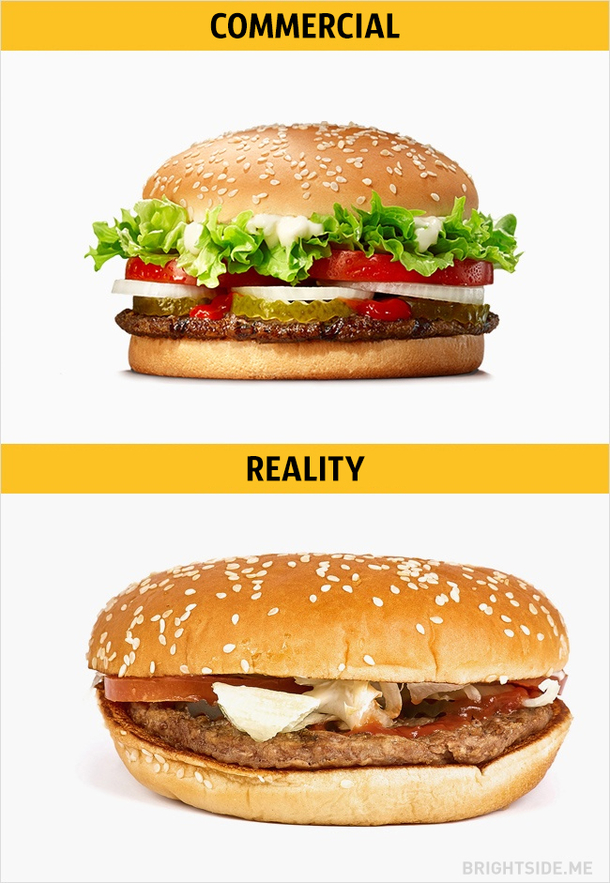
Expectations vs. reality in the fast-food industry. Image courtesy of BrightSide
In an online world filled with advertising, who do people trust? Corporations and brands or other folks with whom they share pain points, needs, or experiences? When you wonder what does user generated content mean, think about this: it is content created by the people, for the people.
Why Should You Consider User Generated Content Marketing for Your Business?
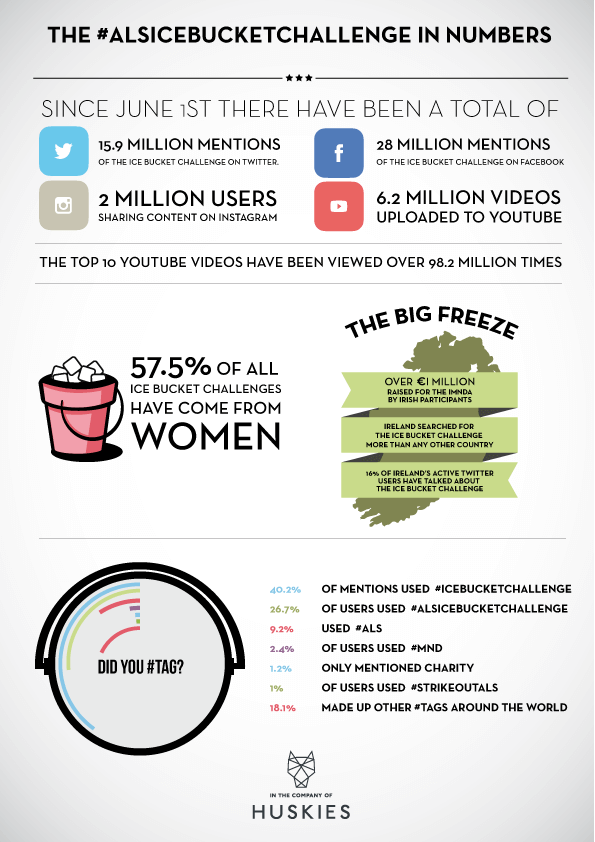
The Ice Bucket Challenge was one of the most successful UGC campaigns in history. Image courtesy of In the Company of Huskies
More and more consumers believe that brands and marketing agencies are inherently untrustworthy. Big companies make money by positioning products/services in the best light, pay for advertising, use tricks, and employ armies of experts to rig the game. While exaggerated, this vision turned user-generated content marketing into a practical, organic, and trustworthy promotion instrument for big and small brands. Let's see some reasons why UGC is so influential:
-
Over 80% of consumers trust online reviews and factor in "verified purchase reviews" in their acquisition decisions;
-
Millennial travelers trust user-generated content more than brand content when choosing destinations, booking hotels, sightseeing, eating in restaurants, etc. For this reason, the hospitality industry relies a lot on user-generated review platforms when they advertise their businesses there;
-
Before spending money, consumers want to know what they are going to get. They thoroughly check out other users' reviews, website testimonials, UG Instagram Stories, photos/videos, YouTube guides, etc.;
-
As a brand/business, you can implement user generated content marketing strategies at any stage of your marketing/sales funnel;
-
By curating and encouraging user generated content, brands engage real customers in their marketing efforts, increasing exposure, engagement, loyalty, and sustainable business relationships;
-
UGC is unique to your brand – there is no way other companies can market the same content since it is your customers who are creating it;
-
User generated content is cheap – if not free – to create and manage. You do have some smart investments to make, but they will not likely reach a traditional marketing budget.
In other words, a well-thought UG content marketing strategy yields two outstanding results: it engages with established customers and builds trust with prospects.
Now that you know what user-generated content is and what benefits it yields let's move on to the next chapter of this guide!
What Types of User Generated Content Are There?
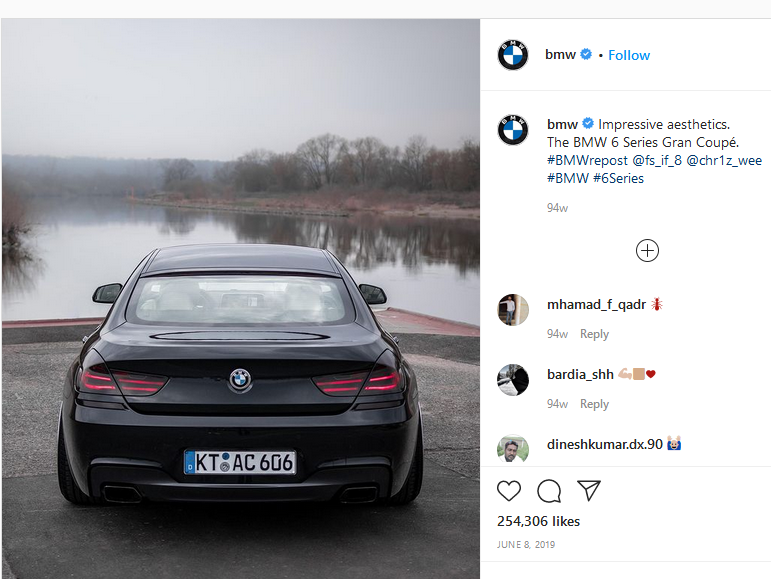
With the hashtag #BMWRepost, the auto company celebrates proud BMW owners and their cars. Image courtesy of BMW
As you probably understood from the definition above, user generated content represents any content created by people who are your customers/users/fans. From this viewpoint, UGC can take almost any shape: text, photos, and videos.
-
Reviews and testimonials on brands' websites, customers' personal blogs, established review platforms (including search engines), influencers' websites, and so on;
-
Social media content, with an emphasis on Instagram photos and videos, Facebook posts, YouTube videos, TikTok videos, etc.;
-
Blog posts;
-
Online streaming;
-
Case studies and interviews;
-
Original content created with other content you provided. One popular UGC strategy is to offer a product to users for free and encourage them to showcase their creations in which they incorporated your freebie. It works best with Instagram music promotion. The artist offers a song for free, and users showcase productions (videos, trailers, mashups, presentations, etc.) featuring the song as part of the soundtrack. It is a win-win situation for both the artist and the public.
-
Instagram hashtag user generated content campaigns, etc.
At this stage of the conversation on user-generated content and how you can take advantage of it, we have to emphasize the difference between UGC and influencer marketing.
User Generated Content vs. Influencer Marketing
In the ultra-competitive landscape of digital marketing, brands employ a constellation of strategies and methods to achieve their strategic goals.
As you probably know, companies and individuals work closely with influencers. The latter – usually social media personalities with traction and weight in specific niches – create and promote content to advertise products/services. With influencer marketing, brands tailor their content to appeal to consumers through the influencer's networks.
In user-generated content, regular users promote a brand's product among their (online) friends, relatives, workmates, etc., because they enjoyed that product and want others to appreciate it too.
Companies put a lot of effort, time, money, and logistics into a successful Instagram influencer marketing campaign. UGC occurs naturally and organically. Even if brands invest in such campaigns, the public easily understands that UGC comes from a place of love, authenticity, and trustworthiness.
How to Initiate and Nurture User Generated Content on Social Media
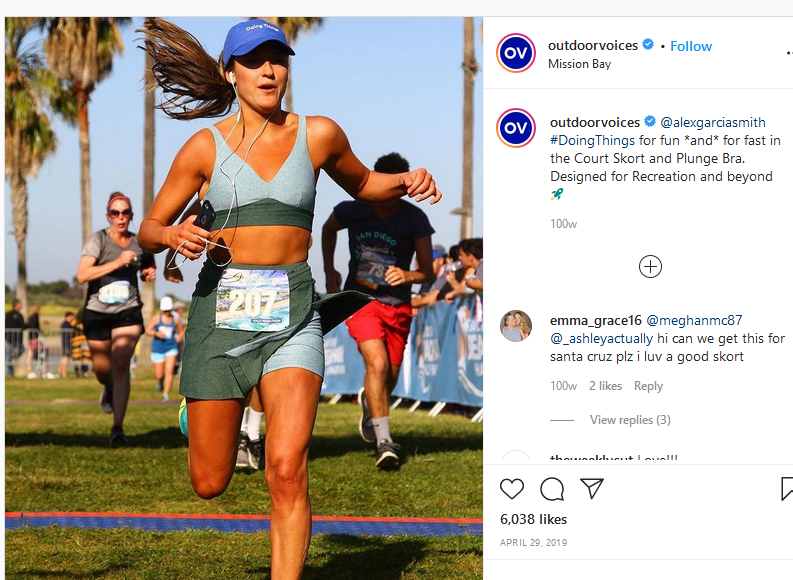
With the hashtag #Doingthings, the brand focused on users’ hobbies & lifestyles and not on the products. Image courtesy of Outdoor Voices
You understand now what is user generated content. At this point, you might think it is a spontaneous phenomenon: brands cannot and should not interfere with the "sharing is caring" campaign run by your loyal customers. You are right up to a point. As we said above, user generated content is a way to engage existing customers and attract prospective buyers. You do have a role and an influence in this entire process. So let's see what brands do to entice organic and valuable user-generated content!
1. Create Brand Recognition and Desire
People are curious and inquisitive by nature. It takes a few happy customers to speak about your products on social media, and you have the roots for genuine and honest UGC.
Some fashion brands encourage clients to take selfies with their new clothes/accessories and post the images on their social networks with a hashtag or a product link.
Book publishing houses, bookstores, hotels, restaurants, and other entrepreneurs in many industries reward users who promote their businesses on social media with hashtags, videos, product links, etc.
In a group, if someone regularly posts opinions, photos, reviews, or links towards a brand, recommending some items, soon enough, the entire group will become curious enough to follow the endorsement and visit your website.
2. Build Customer Loyalty
Turning your existing fan base into enthusiastic salespeople is a dream come true that pays off tenfold. For this reason, many brands reward their customers by making them a part of the brand's story. Sometimes, companies offer discounts & giveaways to returning customers who show how they use their products.
Other companies turn their customers into veritable VIPs and stars, organizing fan-centric public events or showcasing some of their customers' projects. Did you help people achieve a goal or better their lives with the products/services you provided? Make them famous for a change, interview them, help them meet other people with similar interests, etc.
3. Use UGC Mindfully
If a customer on Facebook writes a few nice words about a product you sell and you share the post across all your SM networks, it does not mean you have a user-generated campaign. It would be best if you did not use randomly and blindly whatever post you find related to your brand. Build a UGC strategy first!
An excellent example of mindful UGC is the #WholeFoodsHaul hashtag used by Whole Foods. The company encourages shoppers to post images of their shopping cart's items, recipes they make with WF products, and more. This campaign's beauty is that it is ongoing and consistent with Whole Foods' Instagram branding strategy.
9 Tips for Building a Successful User Generated Content Marketing Plan
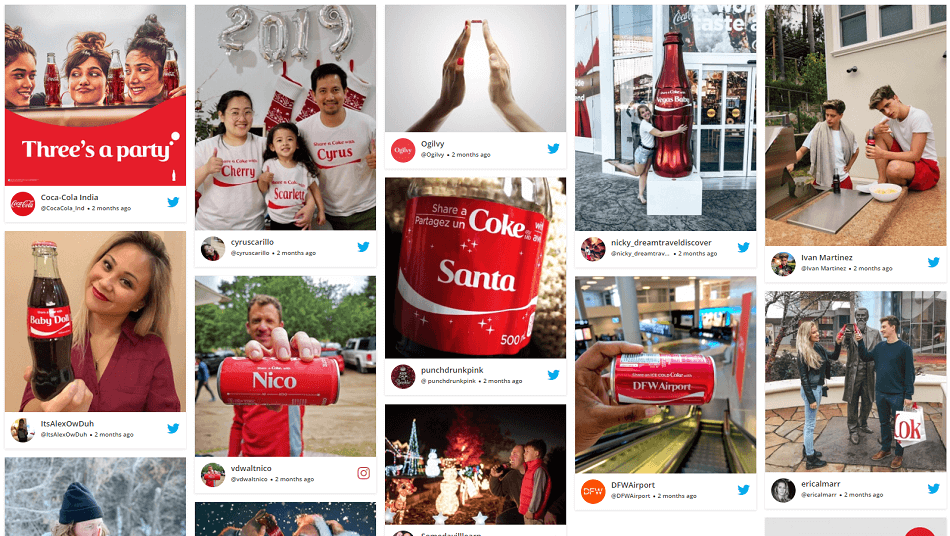
The Share a Coke UGC campaign resulted in more than 150 million sold bottles and around 998 million Twitter impressions. Image courtesy of Medium
Before we let you focus on your marketing campaign, let's look through a few tips on how to promote your business through UGC:
-
Build a content database. Even the most astute content marketers have difficulties in coming up with fresh content every day. Gather UGC and curate it so you can enjoy a library of user generated content relevant for your brand and aligned with your marketing strategy;
-
Let people know about your UGC campaign. If you do not spread the word about it, how would they embrace it? Use your social media channels and entice people to become brand ambassadors by using your dedicated hashtags, for instance. Let them know from the start what to use and how.
-
Ask peoples' permission first. Some people will share your branded hashtag without knowing about its connection with your UGC campaign. Asking to re-share photos and other media fosters goodwill and trustworthy relationships. Moreover, since copyright and user rights are hot topics, asking for permission is a safe way to approach this.
-
Always credit the original creators of the post. Don't forget to tag them accordingly.
-
Mix recognition with rewards. Studies show that about 60% of users who generate content for brands do this for acknowledgment, not prizes or discounts. Again, when people like something, they want to talk about it, so praise them by featuring their work the best you can!
-
Consult your marketing strategy plan. Do your homework before you decide what type of content you need from users. Write a simple statement and explain what kind of UGC you will be more likely to feature. Once you have a clear UGC ask, make it visible for everyone who interacts with your business, be it your new online store, social channels, company blog, physical stores, etc.
-
Perform social media searches to find UGC you might have missed. Some people don't tag brands or use branded hashtags in all their posts, so find them and ask permission to use the content.
-
Learn from the user-generated content you obtain. Are people using your products in ways you haven't considered yet? Do they like your products in combination with other items? You may have found a way to collaborate with other brands or even rehash your marketing strategy. Always listen to what customers have to say about your company/services/products and improve their experience.
-
Get inspired by the user-generated content examples from other brands. If you want to reap the UGC benefits, always keep an eye on your direct competitors' campaigns. Do not steal/copy their ideas, but implement viable solutions into your original UGC marketing strategies.
Bottom Line
We hope we answered all your questions regarding user-generated content (and how you can use it to promote your online store and products, services, or brand). Remember that using a couple of hashtags does not necessarily mean running a user-generated content campaign. Be mindful of these aspects and always find the time and opportunity to celebrate your loyal fans when they act as brand ambassadors on your behalf!
Want to build a brand but don't have a website yet? Get started now

